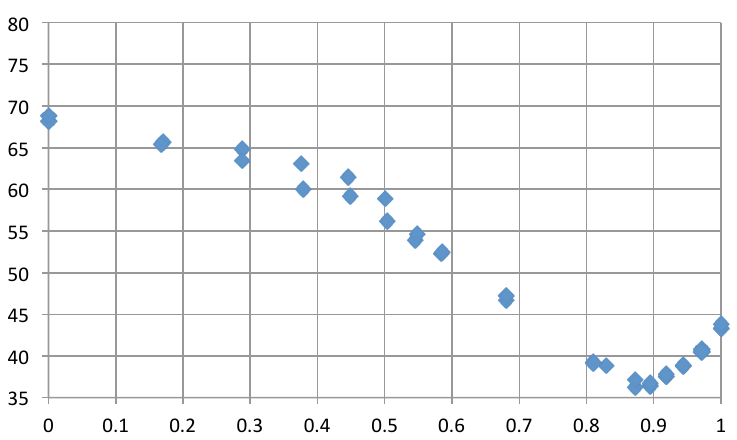How Is The Freezing Point Of A Binary Mixture Of Solids Related To The Composition Of The Mixture?

Solid mixtures have important “real-world” applications. Mixtures of lead and tin are used as solder to make jewelry, to connect copper pipes for plumbing, or to connect electronics components to circuit boards. Solid mixtures have interesting properties that were studied by early physical chemists, who then developed equations and theories that describe and predict the behavior of mixtures. In this experiment we will probe mixtures of fatty acids, which are non-toxic and commonly found in soaps.
Learning objectives
Process Objectives
Develop the ability to convert a relationship into a linear form and apply that relationship, demonstrating the ability to
- linearize a relationship.
- identify the dependent and independent variables in a linear relation and relate these variables to measurable quantities in the lab.
- locate the desired properties from a linearized, graphed relationship using the slope and intercept.
Content Objectives
Choose experimental parameters that allow determination of the phase diagram of a mixture of solids demonstrating the ability to
- predict the freezing point of a mixture
- connect the freezing points of mixtures of solid A with solid B added as the solute to mixtures of solid B with solid A added as the solute
- define and label the components of a solid-liquid phase diagram, including the eutectic point.
Reference
Lead author: Sally Hunnicutt, Virginia Commonwealth University sshunnic@vcu.edu
The Instructor’s Handbook with implementation details, sample data, and expected answers is available through the POGIL-PCL project.